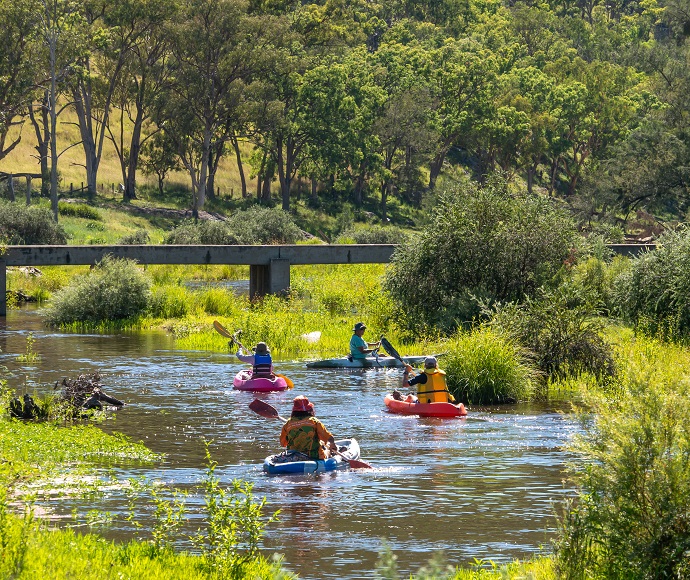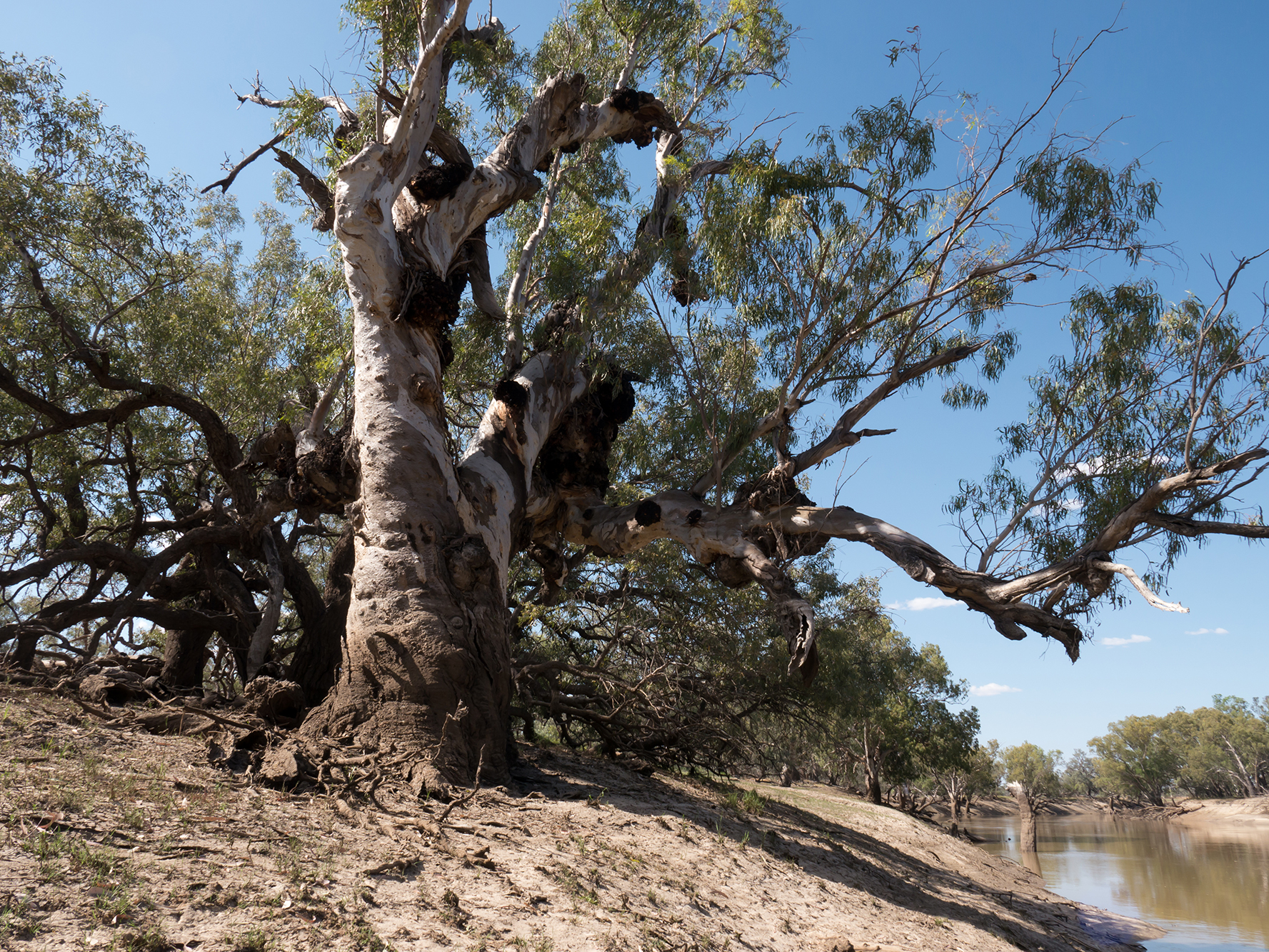 The NSW Border Rivers catchment covers an area of 24,000 square kilometres. The catchment hugs the Queensland border and is influenced by the management of water on both sides of the border.
The NSW Border Rivers catchment covers an area of 24,000 square kilometres. The catchment hugs the Queensland border and is influenced by the management of water on both sides of the border.
Pindari Dam, on the Severn River (NSW), and Glenlyon Dam, on Pike Creek (Queensland), are 2 of the major water storages influencing the catchment. Morella Watercourse, Boobera Lagoon and Pungbougal Lagoon located on the Macintyre River floodplain are important cultural sites for Aboriginal people. These wetlands are also listed as a site of national importance in the Directory of Important Wetlands in Australia. The Traditional Owners of the Border Rivers are the Bigambul, Euahlayi, Githabul, Kambuwal, Gomeroi/Kamilaroi, Kwiambul and Ngarabal.
Water for rivers and wetlands
In 2022–23, water managers will focus their efforts on supporting native fish populations in the Severn, Dumaresq, Macintyre and upper Barwon rivers.
In the catchment, the volume of water for the environment is limited. The Department of Climate Change, Energy, the Environment and Water (the department) works in partnership with the Commonwealth Environmental Water Holder to manage available resources.
The Pindari Stimulus Flow is a small volume of planned water available for use if triggered by inflows into Pindari Dam. If made available, it may be used to target native fish outcomes downstream.
Not all environmental demands can be met by water for the environment. Some demands may be met by regulated water deliveries for consumptive purposes, while others may be met by unregulated (natural flow) events. In any given year, environmental demands may not be met.
Generally, the maximum peak delivery of water for the environment in the NSW Border Rivers is limited to a large fresh event.
Weather and water forecast
The El Niño–Southern Oscillation (ENSO1) outlook remains at La Nina, with a return to neutral ENSO during winter. However, atmospheric indicators remain above La Nina threshold, meaning the La Nina influence continues.
The short-term rainfall outlook is likely to be above median for the Border Rivers which will maintain the current soil moisture and run-off efficiency in the catchment.
Water managers have prepared watering plans that consider a range of weather and water availability scenarios. This is known as resource availability scenario planning. As dam levels remain high, the Border Rivers catchment outlook is rated as ‘wet to very wet’ for the 2022–23 water year.
1 ENSO: The interaction between the sea surface and atmosphere over the Pacific Ocean which results in dryer or wetter conditions (El Nino or La Nina).
Resource availability scenario
 |
Very dry Main aim: Protect Avoid critical loss |
 |
Dry Main aim: Maintain Maintain river functioning |
 |
Moderate Main aim: Recover Improve ecological health and resilience |
 |
Wet to very wet Main aim: Enhance Restore key floodplain and wetland linkages |
Key planned actions for 2022–23
Waterbirds
Waterbirds will benefit from any actions taken under the connectivity and native fish actions listed below if delivered.
Native fish
Water managers may use water for the environment to support native fish movement, breeding and recruitment outcomes in the Dumaresq River downstream of Glenlyon Dam and in the Severn and Macintyre rivers downstream of Pindari Dam.
Native fish will also benefit from any delivery events targeting connectivity.
Vegetation
Riparian and aquatic vegetation will benefit from any events under the connectivity and native fish actions if delivered.
Connectivity
Water managers may use available held water for the environment to provide a low connection flow along the Dumaresq and Macintyre–Barwon system to replenish and refresh pools if more water becomes available in the storages.
If moderate sized natural events occur, water managers may add water to extend the duration of the event and/or increase the distance this water will reach downstream. If practical, they may release held water for the environment to increase the peak flow to inundate higher benches and low anabranches and their connected wetlands.
If larger natural events occur, the use of NSW supplementary and Queensland unsupplemented licences can retain a further proportion of these flows instream.
Figure 1 Map of proposed annual priority targets in the Border Rivers Water Resource Plan area 2022–23


